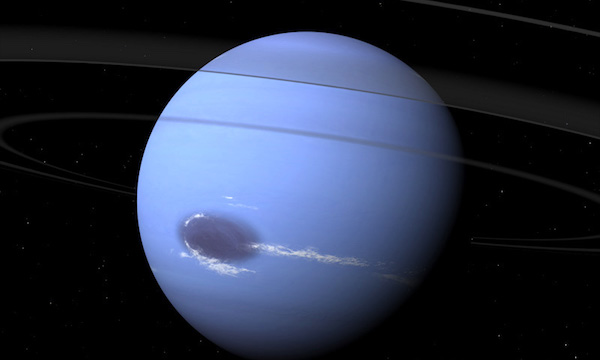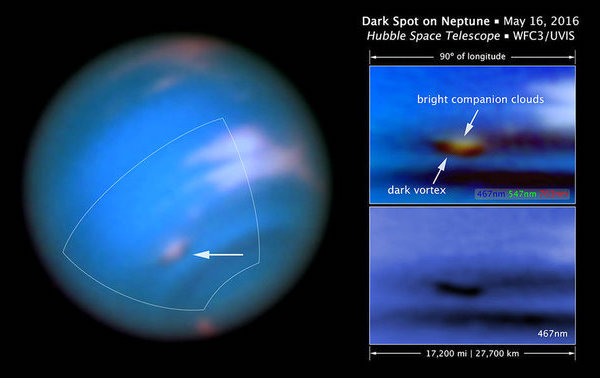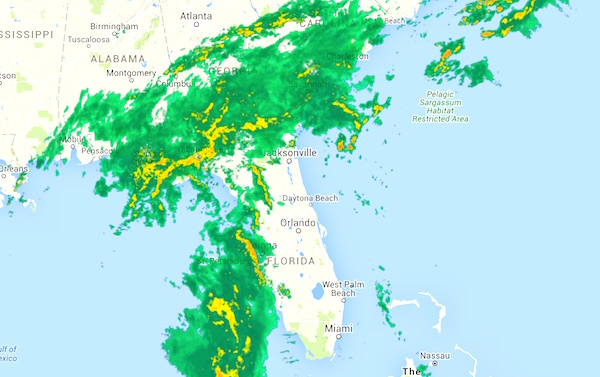The Hubble Space Telescope has taken new images of Neptune and confirmed the presence of a storm, or a dark vortex, in the planet’s atmosphere. Though similar features were seen during the Voyager 2 flyby of Neptune in 1989 and by the Hubble Space Telescope in 1994, this vortex is the first one observed on Neptune in the 21st century. The discovery was announced on May 17, 2016, in a Central Bureau for Astronomical Telegrams (CBAT) electronic telegram by University of California at Berkeley research astronomer Mike Wong, who led the team that analyzed the Hubble data.
Pictured above shows how Neptune’s Great Dark Spot and rings may have looked in 1989 from a position just beneath Neptune’s ring plane. The outermost Adams ring is near the top of the frame, and beneath that is the much broader and diffuse Lassell ring. Further in toward Neptune and abutting the Lassell ring is the thin LeVerrier ring, and beyond that is the diffuse Galle ring.
The Great Dark Spot is believed to be a storm similar to, but only half the size of, Jupiter’s Great Red Spot. While Jupiter’s Great Red Spot has been raging for at least 400 years, subsequent observations of Neptune’s Great Dark Spot in 1994 by the Hubble Space Telescope revealed that this storm has since disappeared.
The Great Dark Spot was a very dynamic weather system, generating massive, white clouds similar to high-altitude cirrus clouds on Earth. Unlike cirrus clouds on Earth however, which are composed of crystals of water ice, Neptune’s cirrus clouds are made up of crystals of frozen methane. Neptune’s clouds are driven by winds of 1,200 mph, the fastest winds of any planet in the Solar System. How such high-velocity winds come to be on a planet so far from the Sun is still a mystery.
NASA says future observations and investigations could provide scientists with a better understanding of how the vortices are created, what causes them to drift through the atmosphere, their relationship with Neptune’s environment as well as what causes them to eventually disperse.
The space agency says it has just extended a contract that makes it possible to continue the science operations of the Hubble Space Telescope for another five years to 2021. This extension would allow a bit of an overlap in operations between the Hubble and its more sophisticated successor, the James Webb Space Telescope, which is scheduled for launch in 2018.











